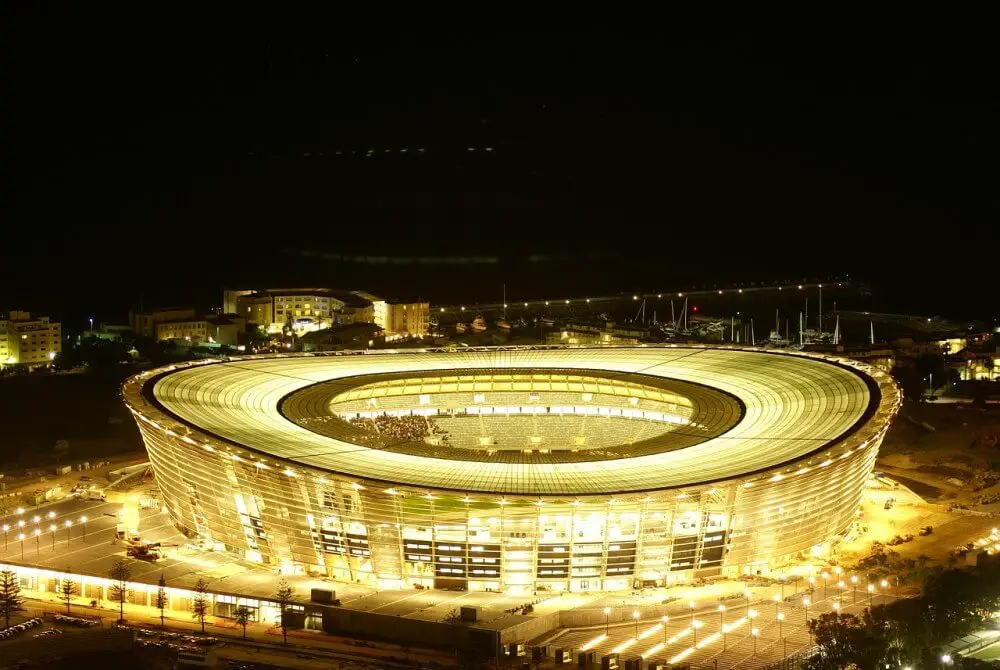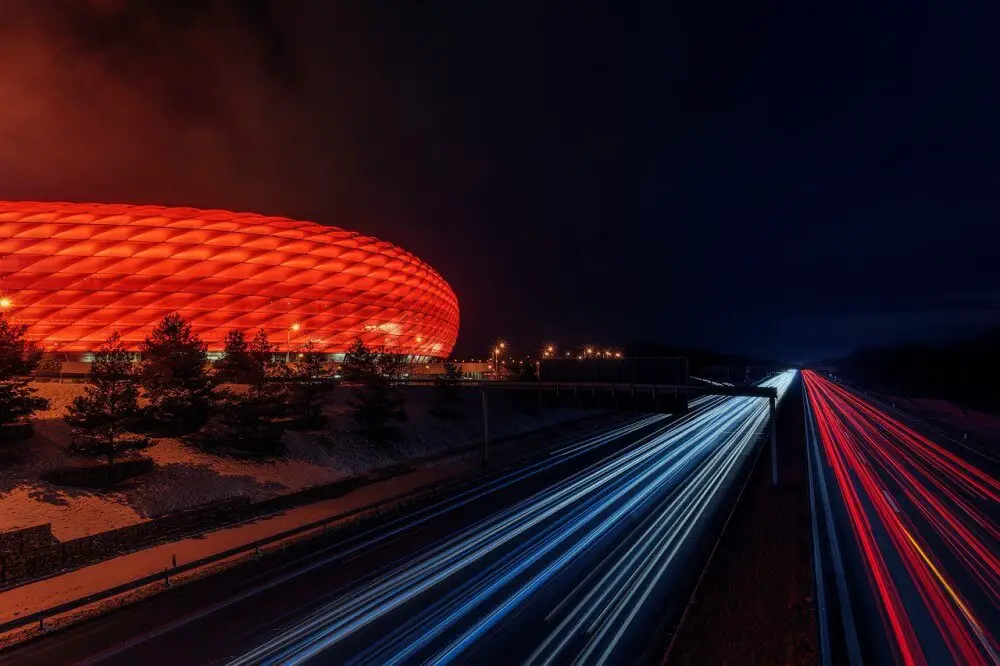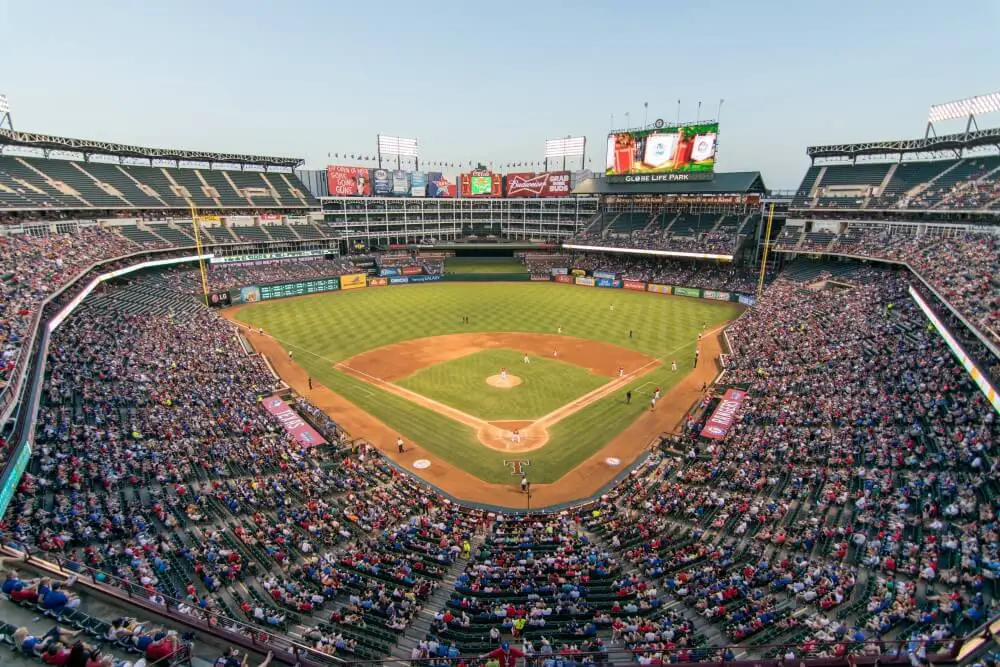Just like the sports, concerts or other entertainment they play host to, stadiums have become big business. Through ticket sales, executive boxes, merchandising and much else besides, these structures are now major money-makers in their own right.
So it’s little wonder that the development of stadiums has coincided with brands wanting to connect their name with such lucrative enterprises.
But there are other reasons why brands have historically, and to this day, wanted to secure stadium naming rights deals for themselves. After all, stadiums weren’t always the all-encompassing entertainment hubs they now are.
With this guide, we are looking at the following question: why are stadiums named after brands?
Stadiums are named after brands for a number of reasons, including revenue generation, advertising potential and brand association. As well as this, the technological advancements and improved safety records of many stadiums have led to them becoming increasingly attractive to sponsors. In some cases, stadiums and brands may have historical and regional links which make a naming rights deal reputationally beneficial.
Read on to find out how stadiums are named, how much stadium naming rights usually cost, and what some famous examples of branded stadiums are.
But first, let’s look into the reasons why stadiums are named after brands in greater detail.

Revenue Generation
The average sports stadium makes around $145 million a year – which is a lot of money, right?
It is, but it may take a different perspective when you take into account the expenses that the typical stadium owner shells out. For starters, the building itself can cost millions, if not billions of dollars to construct, and then years to pay off. Then, you’ve got utility bills, maintenance costs and repair work among the many necessities of stadium ownership.
Additionally, a stadium owner is also often the owner of the club or franchise that plays its games at the venue. So, allied to the stadium costs, you have all the money that needs to go into paying players, staff and administration. Put simply, it’s not cheap.
This is why many stadium owners are all too eager to listen when a well-established brand comes along and offers to invest substantial money purely for the privilege of brand naming.
After all, this diversification of income may mean that club owners are saved from implementing unpopular cost-cutting measures, like ticket price hikes or reduced player investment. This in turn may help them to curry favour with investors and supporters alike.
As well as this, the revenue generated by stadium naming rights can aid in funding large-scale development projects, such as stadium renovations or expansions. For example, Spotify’s recent deal with Barcelona, which is worth around $308million, was sealed in large part because the latter were looking to expand their famous Nou Camp.

Advertising
Advertising opportunities are another prime reason why stadiums are so often named after brands. For, they are great places for brands to raise visibility of not only their name, but also their services and products.
What makes stadiums so uniquely placed to capture the public’s attention is how easily identifiable and marketable they are. After all, they often play centre stage to many of the cultural events that are talked about on each street corner of the world.
And there are opportunities to advertise not only for the people who visit the stadium in person, but also those who absorb the action through television and print. For example, obtaining stadium nights will lead itself to prime placement of advertising, in the form of signage and advertising boards.
Meanwhile, stadiums in big sports leagues, for example, are referenced in media as wide-ranging as newspaper articles and video games. This can lead to the brand getting exposure to a huge audience like no other form of advertising.
Brand Association
Merely by association, naming a stadium after a brand can also have other, more subliminal, benefits. Stadiums are usually places that people link with excitement, possibility and grandeur, and having your brand intrinsically connected to these emotions is a big incentive.
Stadium naming rights also usually last in the long-term, and often these deals are multi-year. This means that this positive brand association tends to last longer than it would in a normal marketing campaign.
If the deal lasts long enough, the branded stadium’s name may even become iconic in its own right. The O2 Arena in London is a great example: this name is arguably now so familiar that most people would refer to ‘The O2’ for the arena even if the sponsorship deal ended.
Regional/International Reputation
One more reason why stadiums are often named after brands is for companies to enhance their regional or international reputation.
Some brands have strong and long standing links with their region of origin, and sponsoring the local stadium is a source of pride and tradition. Volkswagen Stadium in Wolfsburg, for instance, is named after the company who own the club and stadium, largely to bolster its reputation as a large company who is mindful of its roots.
Powerful brands who want to build their reputation in a new market may also choose to sponsor a stadium to present themselves as a worldwide force. This is common with airlines like Etihad and Emirates, who sponsor Manchester City and Arsenal’s stadiums respectively.
Stadium Modernisation
Obviously, brands do not want to be mentioned anywhere near cases of failure or disaster. So, they have to be careful with who they sponsor and when.
Many older stadiums of the late 20th Century fell short in this regard – often, they were dilapidated, lacking facilities and sometimes had safety records that left a lot to be desired. Put short, they were not assets that brands wanted to invest in.
So, it’s testament to modern stadiums’ improved safety record compared to their predecessors that companies are willing to emblazon their name on them.
And, doubtless, the increased aesthetic appeal of a technological advanced 21st-Century stadium is bound to be more attractive to some companies than one that is looking slightly past its sell-by date.
The modernisation of these structures has also meant more attractive features for consumers from across the financial spectrum. Like never before, big stadiums help to cater for the rich and the wealthy, in the form of executive boxes, world-class facilities and easy transportation. Undoubtedly, this has helped to sweeten the stadium sponsorship deals of recent times.
How are stadiums named?
Stadiums are named in a variety of ways. For example, the owner of the club or franchise may choose to name their stadium after a person, or group of people, who have impacted the club in a big way. This may be an especially successful athlete, or someone who has donated lots of money to the club in question.
Or, brands or corporations can approach clubs with an offer of money to advertise their name on the stadium. This is especially common with newly built venues, whose owners need to find a way to pay off their investment quicker.
Alternatively, regional or geographic ties may play a part in the naming of a stadium. Often, this is the case with stadiums who are new but are yet to be branded. The same can be said for stadiums that have generic names, like simply ‘sports arena’.
What was the first stadium to be named after a brand?
The first stadium ever to be named after a brand is widely believed to be Wrigley Field in Chicago. This was the name of the owner of Chicago Cubs – the team who played there, and also the owner of the chewing gum company of the same name.
However some people argue that Fenway Park, the famous home of the Boston Red Sox, is an even older example. This was named by the owner, who previously had owned a company called Fenway Realty Group. Whether this counts or not is up for debate.
Famous examples of stadiums named after brands

There are examples of stadiums named after brands all over the world. It has become a well-known practice and many clubs have leapt at the chance to increase revenue with stadium sponsorship.
Some famous examples of stadiums named after brands include:
- Gillette Stadium, Foxborough, USA
- Allianz Arena, Munich, Germany
- Emirates Stadium, London, England
- Marvel Stadium, Melbourne, Australia
- BMO Field, Toronto, Canada
- Orange Velodrome, Marseille, France
- Nissan Stadium, Yokohama, Japan
- Aviva Stadium, Dublin, Ireland
How much does stadium sponsorship cost?
There is no one factor that determines how much stadium sponsorship will cost. It really depends on the size of the brand and the status of the stadium owner. As well as this, the level of potential exposure and visibility has to be considered.
After all, these things are what decides whether the company in question benefits financially or reputationally from the deal.
What we do know is that, at the top end of professional sports, stadium naming rights deals can cost millions of dollars. The most expensive stadium sponsorship deal of all time was the 2019 deal between Allegiant and the Las Vegas Raiders – this cost around $25 million a year.
But, each stadium sponsorship deal must be arranged between the relevant parties according to all the pertaining factors.
We hope you’ve enjoyed our guide to why stadiums are named after brands. Modern stadiums are some of the architectural marvels of our time, and their potential to become money-makers means they are now more attractive for brand sponsorship than ever.
If you are interested further in the legacies of stadiums after their main purpose has ended, check out our guide on what will happen to the Qatar 2022 World Cup Stadiums.
Or, if you’d like more general definitions on building and architecture vocabulary, explore some of our building wikis – for example, we answer the question: what is a ribbed arch in architecture?
Last Updated on 29 January 2023 by Michael
